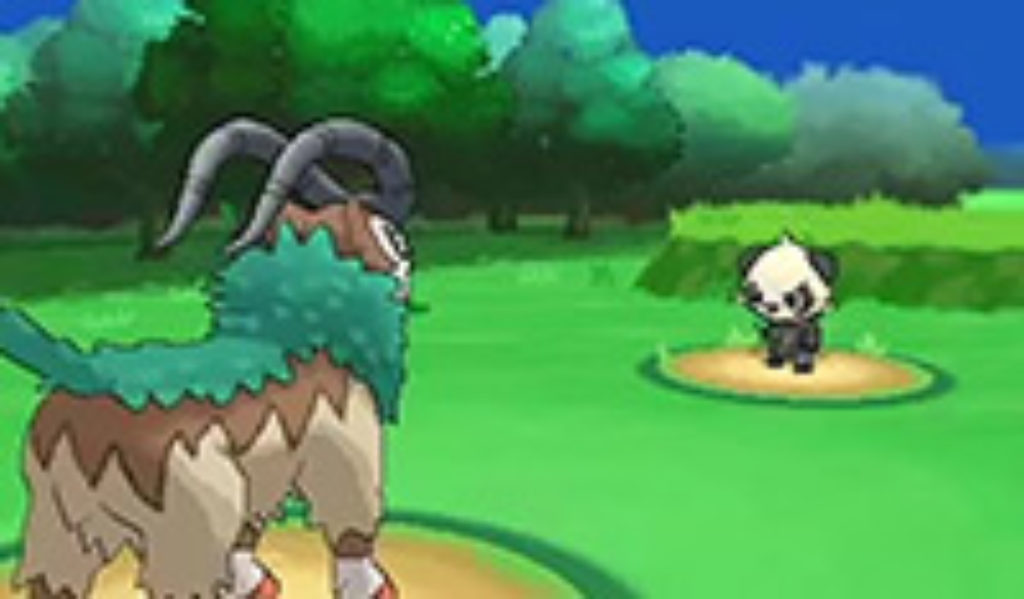
The “pocket monsters” of Pokémon are back in a sixth generation of games. I know, I know, you’d think those little Pikachus and Charmanders would have grown full grandpa beards by now. Or, for that matter, maybe it would be time to expect a complete top-to-bottom reboot, like so many other franchises have done before. But, nope, the creators and fans of this series are a dedicated lot. And so, other than making a small handful of minor adjustments, this latest Poké alphabet soup will look pretty familiar to anybody who’s digitally tossed a Poké ball before.
If you’re wondering what the deal is with two titled games being released at the same time—Pokémon X and Pokémon Y for the 3DS—then maybe you actually haven’t tossed a Poké ball. Because the two-title thing is old hat for these Nintendo game creators. There’s really very little difference between one Pokémon game and another except for a few variations or substitutions of some of the creatures inside. So for many kids ready to buy something new, it comes down to which legendary Pokémon you want to control later in the game—the one that looks like a big red Y (Yveltal) or the one that looks something like a big blue X (Xerneas).
Oui, Oui, Pokémon Amie
So forget about chromosome comparisons, as far as the story is concerned, both latter-alphabet titles are set in Kalos, a world that appears to be France-inspired—even down to a large Eiffel Tower-like landmark in the center of its largest city. Gamers play as a self-named boy or girl who’s just moved into a little neighboring town and gets a special invitation to come meet with a mysterious Professor Sycamore.
It turns out that this charming and well-coiffed guy has chosen a handful of unique kids to participate in an experiment. When you all meet together, the professor hands everyone a starter Pokémon—a cute and cuddly critter that will become a boy or girl’s best friend/pet. Then the prof sends them off to explore the region, gather a variety of wild Poké specimens and battle other Poké trainers.
There’s also a sub-story involving a group of trainer “villains” who wear slick red suits and are up to some world-dominating schemes. But the truth of it all is that these games are far less about the story than they are about the individual Pokémon critters. You want to collect ’em and grow ’em and match ’em up in creature battles. (There are by now some 700-plus different creatures to gather.)
Rock-Paper-Flaming Ball
That battling gameplay is pretty straightforward. It involves roaming through open fields, town squares and trainer gyms, talking to nearly everyone you meet and then matching your Pokémon against other mini-monsters in a rock-paper-scissors-like “war.” If your pocket monster has fire-based attacks or defenses, for instance, and you’re facing a grass monster, well, you’re going to be doing A-OK. If you’re wandering through the weeds and a water monster pops up, however, then the going will likely be much tougher for your fire-breathing pal. The ensuing conflict involves power blasts and melee strikes, but nothing scary or bloody. The loser simply faints away when he runs out of strength. (He can be revived later on.)
So Y might kids want to buy a game named X instead of, say, an older one named Black or White? Well, for one thing, X and Y introduce a new type of Pokémon. Along with rock, psychic, flying, bug, ice, ground, ghost, fire, poison and the other types that already exist, now you can gather up a fairy-type creature that has an advantage over the dragon types that have long dominated in other games.
There’s something called “super training” that young gamers can put their favorite Pokémon through, too. In the past, your creatures only leveled up through one-on-one battles. And certain areas of strength or weakness were pretty much out of your control. But now, minigame training sessions can level-up specific stats—such as speed or defense—and make your gregarious little guy a more well-rounded opponent. “Mega-evolution” chimes in with the ability to advance further than even the highest standard stage of development. By holding a special stone, some of the creatures mega-evolve at the touch of a button, gaining stat boosts and unlocking new abilities.
What to Do With ‘Em When You Catch ‘Em
Which, of course, leads us into one last area of the Pokémon franchise that’s always been part of the mix: spirituality and evolutionary underpinnings. The Pokémon world is without a doubt a cartoony and pleasant place filled with generally pleasing Poké people. Its neighbors and friends promote ideals of fairness and being kind to everyone and everything around you. But it also boasts an Eastern-influenced fantasy mindset (mysticism) and ever-evolving (in some cases demonic-looking) creatures.
Some of these pocket monsters, both new and old, lend themselves to pretty outlandish philosophies if you care to look at ’em closely when you catch ’em.

After spending more than two decades touring, directing, writing and producing for Christian theater and radio (most recently for Adventures in Odyssey, which he still contributes to), Bob joined the Plugged In staff to help us focus more heavily on video games. He is also one of our primary movie reviewers.